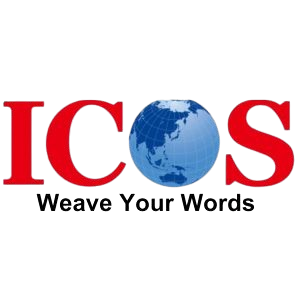How to say good morning in different languages?
The Business Benefits of Multilingual Greetings
A very-very good morning to everyone.
Or
🤝Bon-Jour to my French readers.
🤝Sabah Al-khayr to my Arabic friends.
🤝Ohayō gozaimasu to my Japanese readers.
🤝Zǎo’ān to those in Mandarin-speaking regions.
🤝Annyeonghaseyo to my Korean audience.
🤝Bom dia to my Portuguese colleagues.
🤝Boker Tov to my Hebrew friends.
🤝Buenos días to my Spanish speakers.
🤝Guten Morgen to my German counterparts.
How are you?😊😊
Table of Contents
Toggle
“Language is the road map of a culture. It tells you where its people come from and where they are going.” — Rita Mae Brown
Imagine you walk into a meeting room in Tokyo, and instead of starting with a plain “Good Morning,” you greet your Japanese counterparts with an “Ohayō gozaimasu.”
And then you see that, their faces light up giving you a subtle nod of appreciation,shifting the atmosphere of the room to a more comfortable one.
What do you think just happened? Wasn’t this just a small gesture?
Or was it not?
This small gesture had its weight- as it showed respect, effort, and an understanding of their culture, setting the tone for a positive and fruitful discussion.
Now, imagine, what would have happened, had your entire conversation been conducted in their language.
How much more impactful would that be?
I know you can imagine the difference.
A study by Gallup found that businesses with effective communication strategies experienced 47% higher returns to shareholders over five years.
This statistic is a testament to the power of words and the importance of language in building successful business relationships.
So, why not start with a small gesture, that holds a big impact ?
Let’s learn how to say good morning in different languages and welcome a whole new beginning.
What Are the Different Ways of Telling Good Morning?
Saying “good morning” in the other person’s native tongue gives a more profound connotation even though it can only seem like “just a greeting.”
A list of “How to say good morning in different languages” is provided below:
Language | Greeting | Description |
French | Bonjour | In France, It’s more than just a word; it’s a gesture of respect. |
Arabic | Sabah al-khair | Its a demonstration of your commitment to understanding their culture. |
Japanese | Ohayō gozaimasu | In Japan, politeness is paramount. It shows your dedication to honoring their customs. |
Mandarin | Zǎo ān | China’s growing influence in global markets makes Mandarin an essential language. A morning greeting can be your first step in building rapport. |
Korean | Annyeonghaseyo | In South Korea, formality is key. A respectful greeting in Korean sets a positive tone for any business meeting. |
Portuguese | Bom dia | Whether in Brazil or Portugal, a simple “Bom dia” can make your partners feel valued and understood. |
Hebrew | Boker tov | In Israel, a morning greeting in Hebrew can foster a sense of connection. |
Spanish | Buenos días | With Spanish being widely spoken across the globe, greeting your Spanish-speaking clients in their language is both practical and courteous. |
German | Guten Morgen | A German client will appreciate the precision and thoughtfulness of your greeting in their native tongue. |
You are saying more than just a “Good Morning“; you are also saying “I value you.”
Why Is Communication Important for Business?

Do you remember the last time you had a misunderstanding in a conversation? It could have been something small, but it did have a ripple effect on the rest of your day, Right?
In business, the stakes are even higher.
Communication isn’t just about exchanging information;
- It’s about ensuring clarity and fostering trust.
- It’s the glue that holds teams together,
- The link between you and your clients,
- The foundation upon which deals are made.
Clear, precise, and culturally appropriate communication reduces confusion and fosters an effective rapport.
Consider a scenario in which your company tries to enter a new market. If you do not make the effort to learn the cultural details and language of that market, your message can be lost—or worse, misconstrued.
Hence, communicating well across multiple languages is a need of the hour as it:
- Ensures Clarity
- Builds Trust
- Unifies Teams
- Connects with Clients
- Foundation for Deals
- Prevents miscommunication
- Strengthens Relationships
- Has more successful outcomes.
Which of the Following Is Not an Effective Communication Strategy for Business?
It’s easy to fall into the trap of believing that if you’re talking, you’re communicating proficiently. However, not all communication methods in business are the same. Some can be quite damaging.
Let’s take a look at some usual disasters.
- Overloading with Jargon: While using sophisticated phrases or industry-specific jargon may make you appear educated, it can also turn off your audience. Effective communication is about ensuring that everyone receives the message correctly, not simply demonstrating your expertise.
- Ignoring Cultural Differences: Assuming that what works in one culture will work in another leads to disaster. Cultural nuances influence how messages are interpreted, and disregarding them can lead to misunderstandings and missed opportunities.
- Lack of Clarity: If your message is unclear, it makes no difference how frequently you deliver it. Confusion can lead to errors, frustration, and, eventually, a breakdown in communication.
The keys to good business communication are simplicity, clarity, and cultural awareness. Avoid these typical errors, and your messages will be recognized and appreciated.
What Are the Cultural Differences in Communication?
Has it ever happened- you said something and it was taken in the wrong way, simply because in the other person’s culture, it meant something different?
It’s a common experience, and in business, it can have serious consequences.
Culture shapes how we communicate.
In one culture, something that is deemed kind could be viewed as impolite in another.
For example, in some cultures, directness is valued, while in others, it’s important to be more indirect to avoid offending someone.
Let’s consider a few examples:
Japan: Silence as Respect
- Insight: Silence in Japanese conversations signifies respect and thoughtfulness.
- Implication: Pauses are thoughtful, not disengaged. Recognizing this avoids misinterpretation.
Western Cultures: Silence as Discomfort
- Insight: In Western cultures, silence often indicates discomfort or disengagement.
- Implication: Continuous conversation is preferred. Avoiding silence keeps interactions smooth.
Germany: Direct Communication
- Insight: Germans value directness, seeing it as efficient and honest.
- Implication: Clear, to-the-point communication fosters respect and effective business dealings.
Some Asian Cultures: Indirect Communication
- Insight: Indirect speech in many Asian cultures maintains harmony and respect.
- Implication: Subtle communication is key to building trust and avoiding conflict.
Middle East: Personal Relationships First
- Insight: Personal connections are prioritized before business in the Middle East.
- Implication: Building trust through relationships leads to more successful business outcomes.
United States: Time and Directness
- Insight: In the U.S., efficiency and directness are highly valued.
- Implication: Being concise and straightforward is crucial for effective communication.
By understanding and respecting these cultural differences, you can communicate more effectively and build stronger, more meaningful relationships with your international partners.
How Does Language Localization Improve Business Communication?
Let’s say you have launched a product in a new market and find that your carefully crafted marketing message is not resonating with the local audience.
This is where the magic of language localization may be seen.
Language localization involves tailoring your content —whether it’s a website, advertisement, or customer service script—to align with the cultural norms, values, and language of your target audience.
It’s about ensuring your message feels natural and relevant to the people you’re trying to reach.
For instance, a global brand that localizes its marketing campaigns for different regions will see better engagement and a stronger connection with its audience as it targets the needs, preferences, and expectations of its target audience .
Frequently Asked Questions:
Greetings are the first step toward making a connection. They establish the tone for the conversation and demonstrate respect for the other person, which is essential in developing good business connections.
Using a client’s original language demonstrates cultural knowledge and respect, which makes them feel appreciated. It can also improve communication, clear up misunderstandings, and develop business relationships.
Learning a new language can help you reach new markets, increase communication with international clientele, and gain a competitive advantage. It also demonstrates that you are prepared to go the extra mile to understand and connect with your customers.
Tailoring your message to the linguistic and cultural environment of your target audience is known as “localized communication.” Making your message relevant and appealing to the local audience is crucial.
Netflix’s approach to content development serves as a great example of localization. Netflix has gained global success by producing shows and web-series local languages that cover culturally relevant topics.
For example, the Spanish series “La Casa de Papel” (Money Heist) achieved global applaud, demonstrating how localized material can transcend cultural boundaries and appeal to a diverse audience.
Signing off:

As you have seen a simple “Good Morning” can be an effective tool in corporate communication.
And, if your business is conducted across borders, oceans, and time zones, the significance of language in building relationships must be balanced.
Small gestures like a simple greeting or little cultural statements in the client’s native language can break the ice, build trust, and open doors that might have remained closed otherwise.
So, the next time you’re preparing for a meeting or creating a message for a new market, remember the value of a well-placed “Good Morning” and the impact of speaking straight to someone’s heart using their language.
The efforts you make today can result in better connections and more success in your worldwide commercial ventures.
Connect with us if you want any help in better communication to the business world.
To know on how AI can help in Japanese translation and how to incorporate technology in quality work check here

